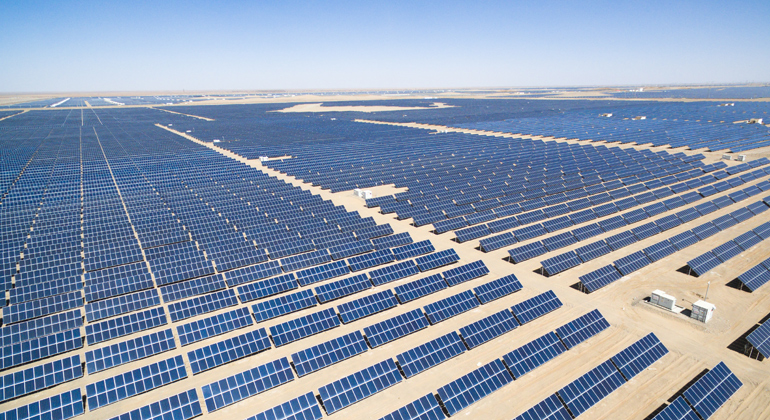Gigantic solar farms of the future might impact how much solar power can be generated on the other side of the world
The Sun’s energy is effectively limitless. While resources such as coal or gas are finite, if you are able to capture and use solar power it doesn’t prevent anyone else from also using as much sunshine as they need.
Except that isn’t quite the full story. Beyond a certain size, solar farms become large enough to affect the weather around them and ultimately the climate as a whole. In our new research we have looked at the effect such climate-altering solar farms might have on solar power production elsewhere in the world.
We know that solar power is affected by weather conditions and output varies through the days and seasons. Clouds, rain, snow and fog can all block sunlight from reaching solar panels. On a cloudy day, output can drop by 75%, while their efficiency also decreases at high temperatures.
In the long term, climate change could affect the cloud cover of certain regions and how much solar power they can generate. Northern Europe is likely to see a solar decrease for instance, while there should be a slight increase of available solar radiation in the rest of Europe, the US east coast and northern China.
If we were ever to build truly giant solar farms, spanning whole countries and continents, they may have a similar impact. In our recent study, we used a computer program to model the Earth system and simulate how hypothetical enormous solar farms covering 20% of the Sahara would affect solar power generation around the world.
A photovoltaic (PV) solar panel is dark-coloured and so absorbs much more heat than reflective desert sand. Although a fraction of the energy is converted to electricity, much of it still heats up the panel. And when you have millions of these panels grouped together, the whole area warms up. If those solar panels were in the Sahara, our simulations show this new heat source would rearrange global climate patterns, shifting rainfall away from the tropics and leading to the desert becoming greener again, much as it was just 5,000 or so years ago.
This would in turn affect patterns of cloud cover and how much solar energy could be generated around the world. Regions that would become cloudier and less able to generate solar power include the Middle East, southern Europe, India, eastern China, Australia, and the US south-west. Areas that would generate more solar include Central and South America, the Caribbean, central and eastern US, Scandinavia and South Africa.







